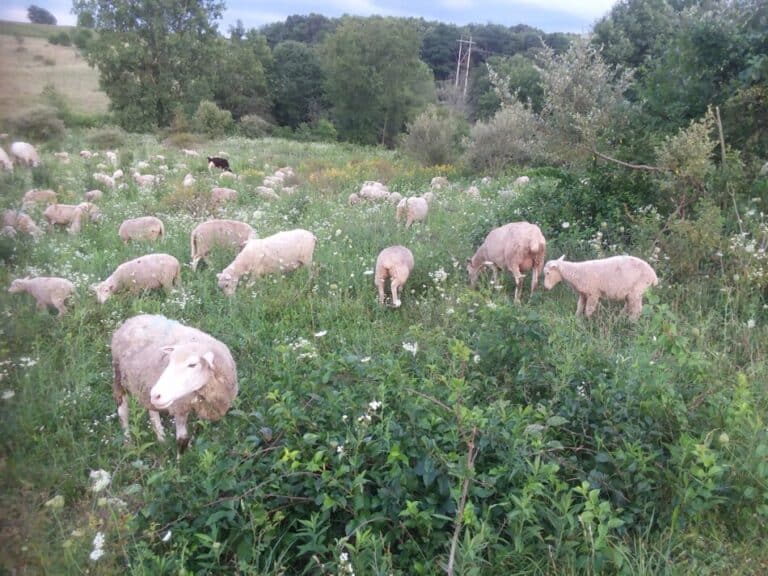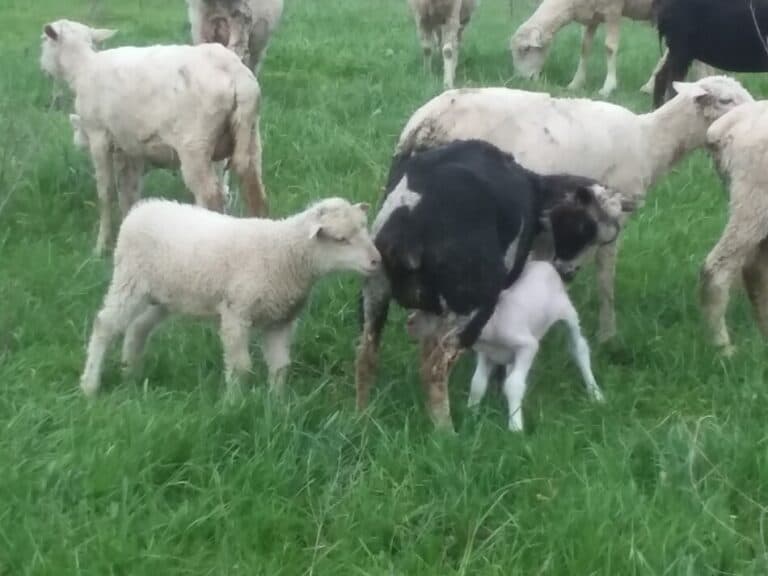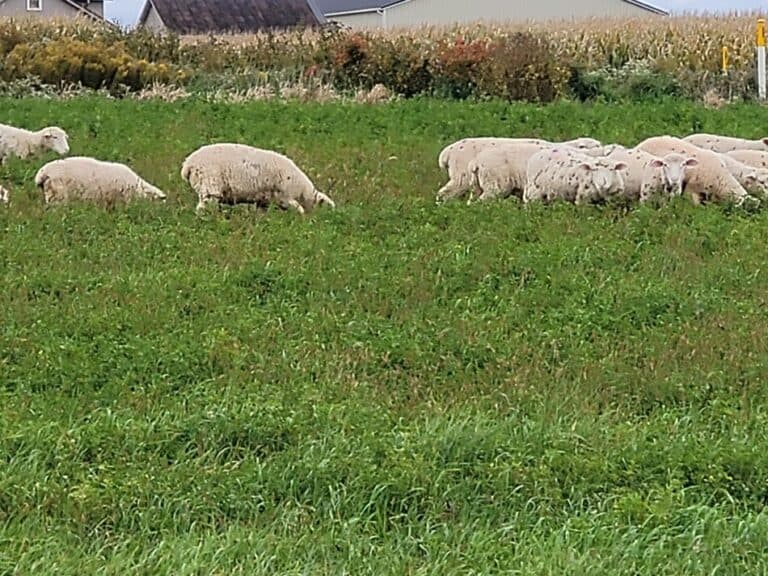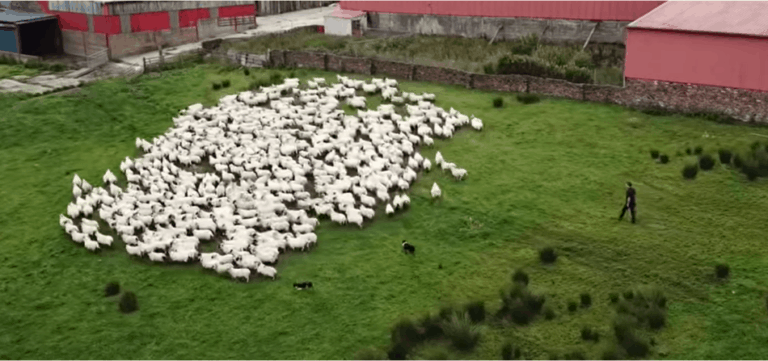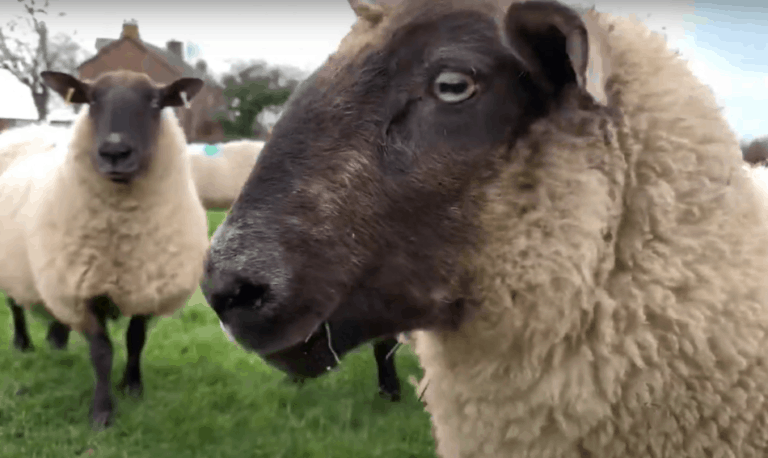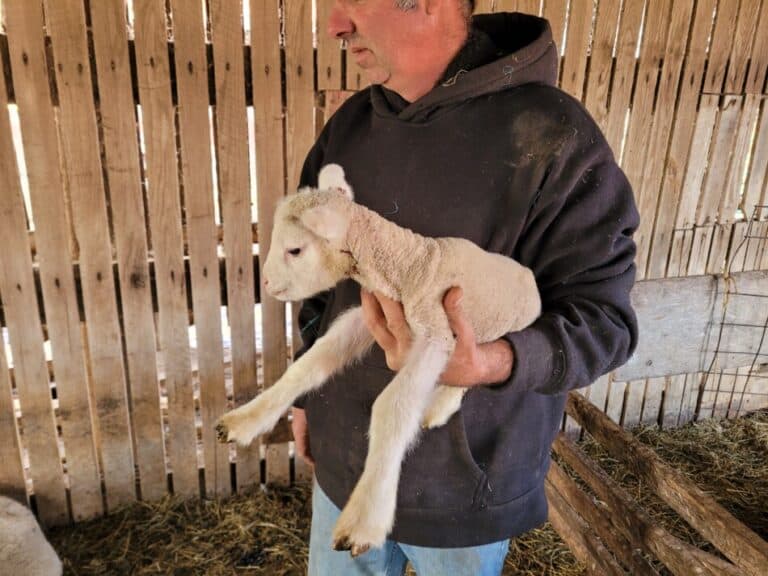What Can You Make Out Of Sheep Wool?

I’m sure, like most everyone else, the first thing you think of when you hear uses for wool is some sort of wool craft like handspinning or felting. That’s certainly the first thing I think of!
However, there are many other uses for wool, both common and up and coming.
Sheep wool can be made into household goods, clothing, art, insulation, etc., in addition to more recently considered ideas like water reservoirs for plants and weed blocking layers for paths and driveways.
Things you can make from sheep wool
There are still, even in today’s world, plenty of folks who use wool as one of the main fibers in their crafting.
Plenty of small farmers are adding a bit of income to their sheep enterprise by selling the fleeces or ready to spin wool preparations, like roving or combed top, from their flock.
With a huge variety of sheep breeds, it’s no surprise that there is also a huge variety of wools, some of which are highly sought after, others are not.
Breeds Of Sheep Best For Wool goes over some of the characteristics of sheep breeds that have wool that is currently more valuable than most commercial grade wool.
Places To Sell Your Wool gives you some ideas of places that may buy your wool. Word to the wise, unless prices drastically change, commercial wool price is low, very low.
Uses for wool in hand made items
The classic use of wool is to make it into all manner of hand made items, like clothing, furniture stuffing, felting, rugs, bags, hats, mittens, gloves, scarves, and so on.
Wool is also being used in the craft world as a medium for art, like sculpture made of wool, for example felted wool animals, and wool paintings, which are landscape style paintings made of needle felted wool.
Ready to use fiber, like roving or combed top, for handspinners, felters and weavers is a fairly big market with wool crafters wanting to use wool and other spinnable fibers, like angora, for their projects.
An especially interesting twist to breed specific wools is that there is a renewed interest in wools from rare or unusual breed wools, even from breeds that you would not think of as having nice wool.
Wool crafters want to explore the world of wool and are seeking out a wide variety of wools to use in their new projects.
Interested in learning to spin wool? Check out my Beginning Spinner Course at Woolmaven.com!
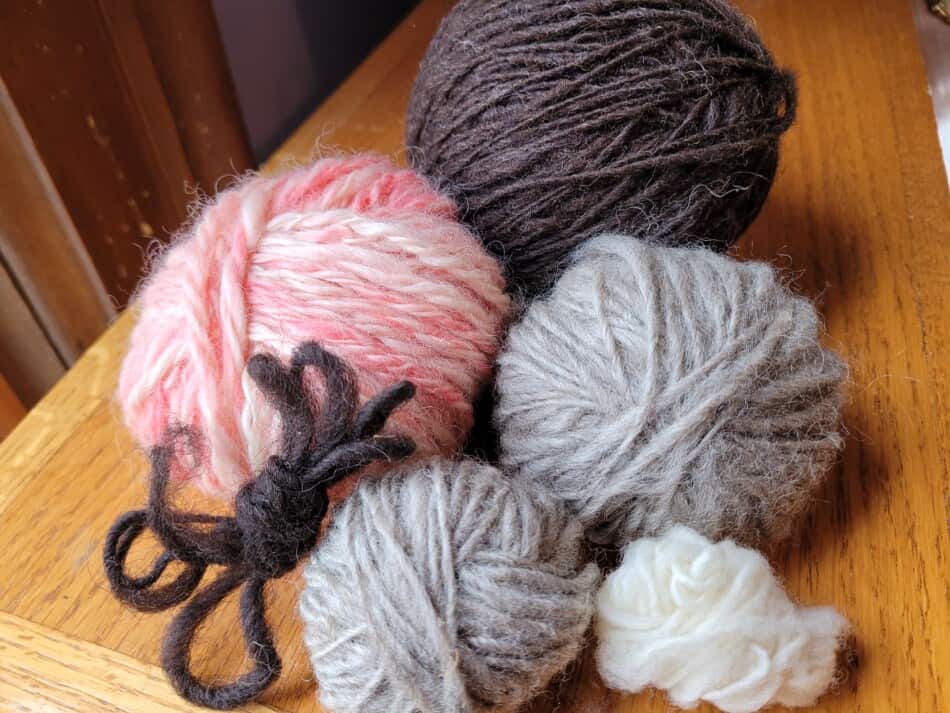
Up and coming (less common for now) uses for wool
Now, we move onto the less common uses for wool that folks are considering using, mostly due to the not so great prices in the commercial wool market.
If wool prices stay low, making things out of wool will look like more of a good opportunity. If prices rebound, not so much.
Since wool prices have been not so great for a while now, I see these alternative uses as being increasingly viable, especially for any wool use that takes the place of a petroleum based product.
Wool substrate to block weeds
Wool is currently being used as a base layer to block weed growth under paths and driveways.
Actually, our wool clip for this year will be going to a company that wants to test it out as a substrate for putting under driveways, both as a weed blocker and a base for the gravel.
With the extremely low price of wool, this is one of the many creative opportunities that are being explored with wool.
Alternative Uses For Sheep Fleece is an article that Darach Social Croft has showing the things they are currently doing with sheep fleeces, including using dirty or tangled wool under gravel pathways.
Wool insulation
Wool insulation for houses and other buildings is available on the market now. It has not been used much, due to costing more than fiberglass insulation, but that could easily change with supply issues.
Interestingly enough, any fiber processor that goes from raw fleeces to clean fiber of some sort, would have to card the wool into batts first, before turning it into anything else, like roving or even yarn.
This means that wool insulation should be fairly easy to find, once the price makes it a viable alternative to current insulation materials.
Wool dags as fertilizer
Wool dags are being used as fertilizer. For anyone who does not know, dags are the poo balls that form on the locks of wool on the back side of some sheep.
Not all sheep have dags, but once the dags start to form, they will be on the fleece until it is shorn.
After shearing, the dags are pulled off as scrap, which they are as far as usable fibers go, but for fertilizer, the dags just need to be gathered up and spread out in your garden or flower beds.
The natural weather patterns of your area, specifically rain, will break down the dags and gradually make them available to be used by your plants.
Wool for holding water for plants
Wool is currently being used for its water holding ability in hanging baskets and as a mulch on top of the ground for more substantial plants, like trees.
Wool is also being used as part of the base of huglekultur, along with other materials that will break down and feed the bed, like tree branches. A layer of wool in the bottom is a moisture reserve for the bed.
For more details on using wool as a water reserve for plants, ready 10 Uses For Wool Besides Spinning on the Morning Chores website.
What to do with raw sheep fleece for wool crafts
If you decide to work with some of your raw wool, to get it ready for spinning or felting, you’ll probably need to do a bit of work to make the wool useable.
Some fleeces are beautiful and easy to spin, right off of the sheep, but, for most fleeces, this will not be the case and the fleece will need a bit of work to make it easy to use.
If you want to use your wool raw, read How To Prepare Raw Wool For Spinning on Woolmaven.com. This is another site I have that is all about working with wool, with a focus on handspinners.
While you can spin raw fleece, most folks prefer washed, but either will work just fine.
Want to learn to spin your own yarn? Check out my Beginner’s Spinning Course at Woolmaven.com!
The most important thing to know about working with raw fleece is that you are the one who decides how to proceed.
If there is too much vegetable matter (VM), lanolin, dirt, felted tips for you, then do more to the fleece, like washing or flick carding it, to make it suit your needs.
There is no right or wrong, only what you want to make your spinning or felting more enjoyable.
If you do decide that your fleece needs some more work before it is usable, you’ll also want to have a way to card the fibers to separate them back out. Get a set of hand carders or a flick carder for this.

